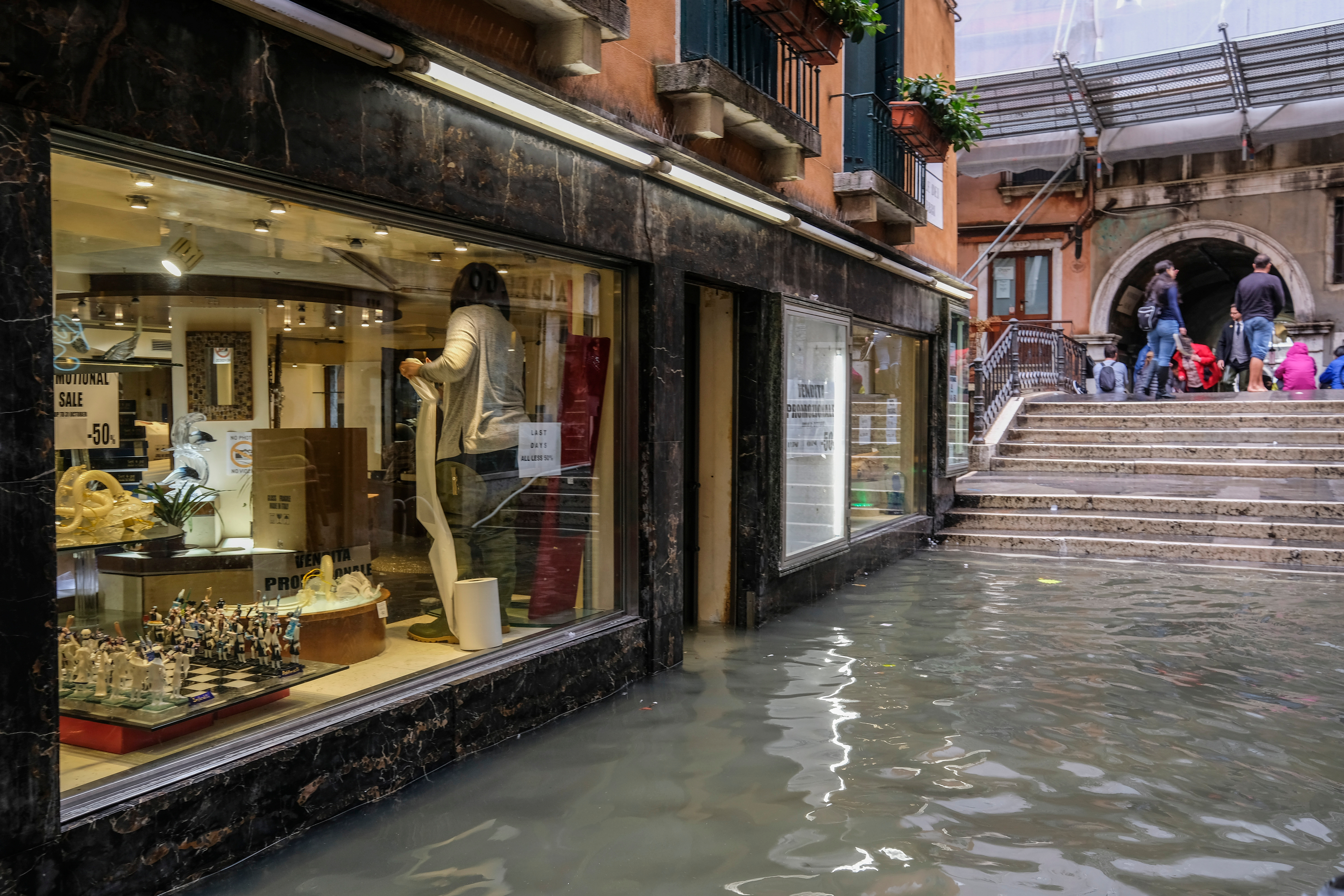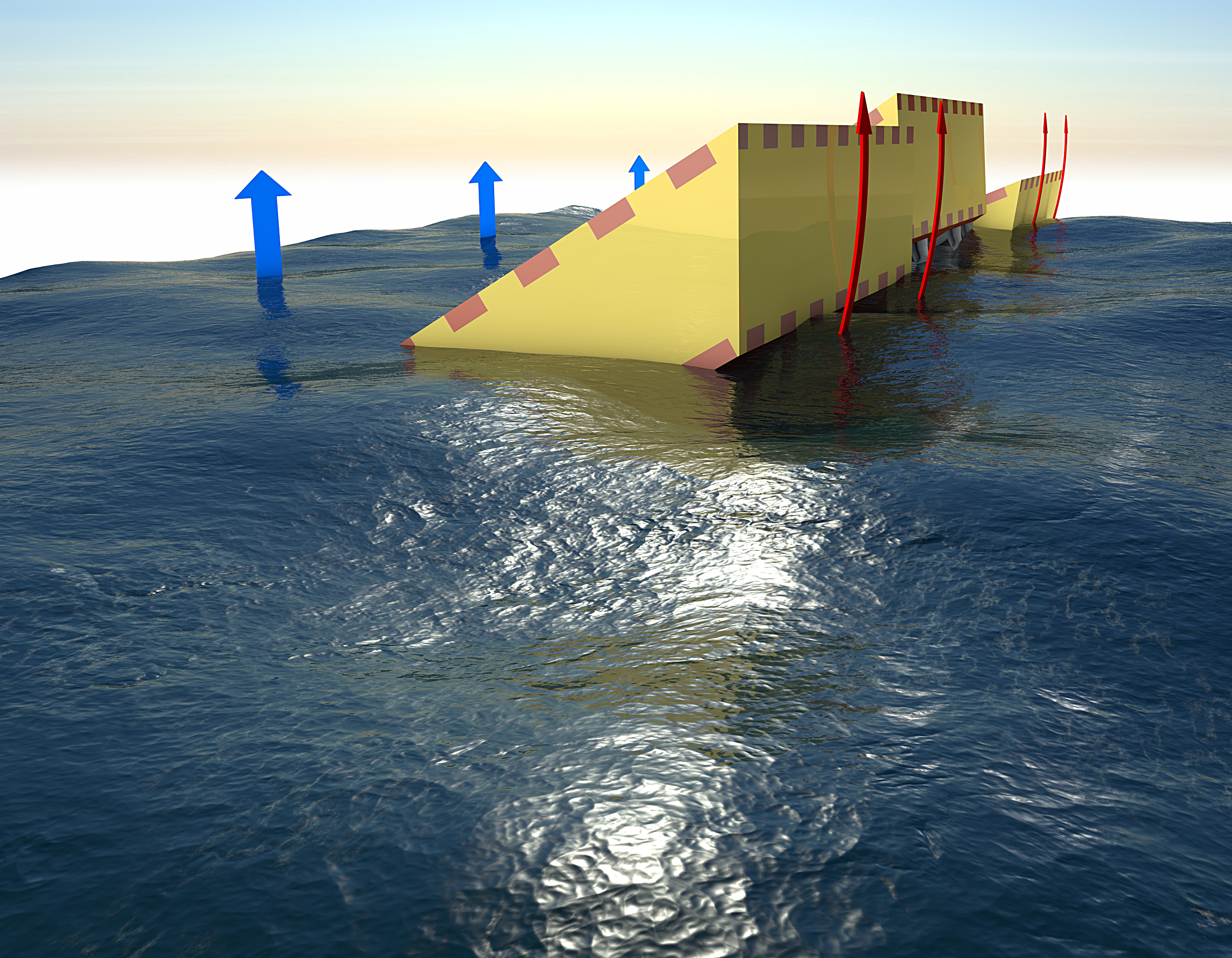Victory in Venice

 In a dramatic example of human ingenuity, Venice, Italy, scored a major victory in its fight to survive rising waters that have threatened its very existence. Nearly five decades in the making, the city recently raised a system of barriers preventing a potentially devastating flood.
In a dramatic example of human ingenuity, Venice, Italy, scored a major victory in its fight to survive rising waters that have threatened its very existence. Nearly five decades in the making, the city recently raised a system of barriers preventing a potentially devastating flood.
Eric Herman
The Mediterranean Sea has been trying to reclaim Venice, Italy practically since the mesmerizing city’s birth in the 5th Century AD. In recent decades, the annual tidal patterns have intermittently wreaked havoc, flooding huge portions of the city in varying levels of water.
The flooding has become far more severe since the early 20th Century when a series of artesian wells were sunk into the periphery of the lagoon that contains Venice. In the 1950s, engineers recognized that draining the region’s natural aquifer was causing the city to sink. the time they banned artesian wells in the 60s, Venice was already vulnerable to its “acqua altas” (high waters).
 That ongoing struggle may have finally taken a turn in the historic city’s favor. On Oct 3, the city was going to experience a 53-inch acqua alta that would have flooded approximately half the city. But this time, when the flood sirens sounded, the waters did not rise.
That ongoing struggle may have finally taken a turn in the historic city’s favor. On Oct 3, the city was going to experience a 53-inch acqua alta that would have flooded approximately half the city. But this time, when the flood sirens sounded, the waters did not rise.
The reason: it was the first time the city raised a system of 78 massive barriers mounted in the ocean floor guarding the city’s three major inlets in order to prevent water from rising in the canals, plaza and palazzos. Collective known as MOSE (Italian for Moses) the system has been in the works since 1984, but has been plagued by delays, controversy and even political corruption. After all those years of hope and frustration, the system worked. Areas that would have been flooded, remained almost completely dry.
“This was a historic day for Venice,” Mayor Luigi Brugnaro told journalists. “There’s huge satisfaction having spent decades watching helplessly as the water arrived everywhere in the city, causing vast amounts of damage. We have shown that works.”
The successful use of MOSE couldn’t have come at a better time. The conditions that result in acqua altas, a combination of high tides, low pressure and winds known as sirrocos, have steadily increased in intensity and frequency in recent years, a phenomenon often attributed to climate change. Back on Nov. 19 in 2019, the city was devastated by an acqua alta that reached 187 centimeters, flooding nearly 90% of the city. Since then businesses have struggled to recover, but the loss of tourism revenue due to the pandemic has badly damaged the Venetian economy.
 Being able to prevent the flooding going forward has been deemed absolutely essential to any hopes of economic recovery, as well as the preservation of the historic sites and popular destinations. Local priest don Paolo Bellio referred to the success in his evening sermon saying, “Today we were saved. This is a day of joy for everyone.”
Being able to prevent the flooding going forward has been deemed absolutely essential to any hopes of economic recovery, as well as the preservation of the historic sites and popular destinations. Local priest don Paolo Bellio referred to the success in his evening sermon saying, “Today we were saved. This is a day of joy for everyone.”
In addition to the barriers, the MOSE project also includes raising some areas of pavement and permanent defense walls near the flood barriers.
It is scheduled for completion in December 2021, at which time the MOSE project will be handed over to the city with the hope that the high waters that have threatened Venice will be finally be only a soggy memory.









